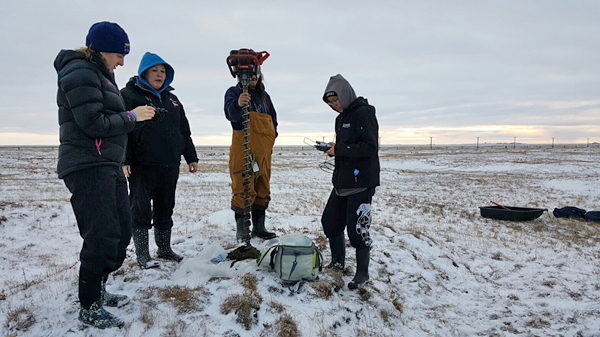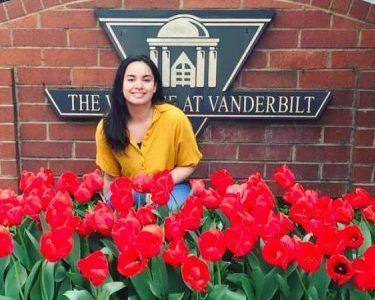Population Abundance and the Effects of a Warming Environment
Ana Stringer, Jaime Patkotak A.A., Olive Kanayurak, Joanna Green, M.S., Linda Nicholas-Figueroa, Ph.D., Rebekah Hare, Ph.D.

Editor’s Introduction:
For residents of the Arctic regions, global warming is not a theoretical issue. Here, temperatures are rising faster and environmental changes can be readily observed. Melting permafrost and rising Co2 levels are expected to give rise to invasive microorganisms, which can increase the risk of disease in animals and plants that are an important food source for Alaska Natives living in rural villages.
This concern was the impetus for “Arctic Microbes: Population Abundance and the Effects of a Warming Environment,” one of three papers selected by Native Science Report for publication as part of its student research showcase. Reflecting the work Iḷisaġvik College students Ana Stringer, Jaime Patkotak, and Olive Kanayurak, it examines how a rapidly warming Arctic climate is affecting microbial life in the region’s soil. Iḷisaġvik College is a Native-controlled institution located in Utqiaġvik (formally Barrow), Alaska, the northernmost city in the United States.
The project was part of the college’s Arctic Microbe Project, which teaches science through research. The purpose, explained Linda Nicholas-Figueroa, an associate professor of biology and chemistry at the college, is to “expose students residing on the North Slope of Alaska to science, but in an informal setting where they learn all aspects of research and not just bench work.”
Nicholas-Figueroa initially proposed the project featured here, but emphasized that the students took a major role in the research design. “They performed all the field work to collect soil samples and all of the DNA extractions,” she said. These students also presented their results at scientific forums and conferences, including the National Science Foundation’s Tribal Colleges and Universities Program Symposium and the Society for Chicanos/Hispanics and Native Americans in Science National Conference.
“These students were not only engaged in the field and at the bench, they also learned science materials such as ecology, microbiology, and genetics,” Nicholas-Figueroa said. “Equally important, the students learned about the significance of their research as it relates to the health of the local environment and the health of the community.”

Lead author Ana Stringer is currently a sophomore at Vanderbilt University, studying Earth and Environmental Science. She started taking courses at Iḷisaġvik College while in high school and graduated with an A.A. in Liberal Arts the same year she completed high school. After college, she hopes to work with coastal communities to help mitigate the environmental and societal impacts of climate change.
Co-author Jamie Patkotak was born and raised in Utqiaġvik. She now teaches the Iñupiaq language at the elementary school where her two sons attend. The third student author, Olive Kanayurak, grew up in Atqasuk, Alaska, the seventh of nine children. Olive attended Iḷisaġvik while working towards a Liberal Arts degree. She hopes to study wildlife biology at the University of Alaska-Fairbanks and eventually work at the North Slope Borough Department of Wildlife Management in Utqiaġvik.
